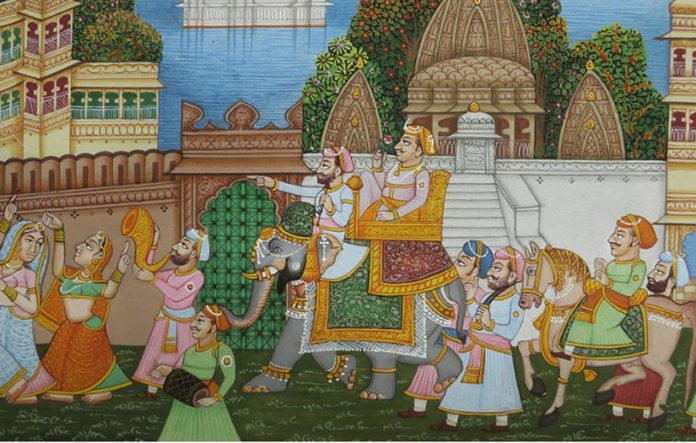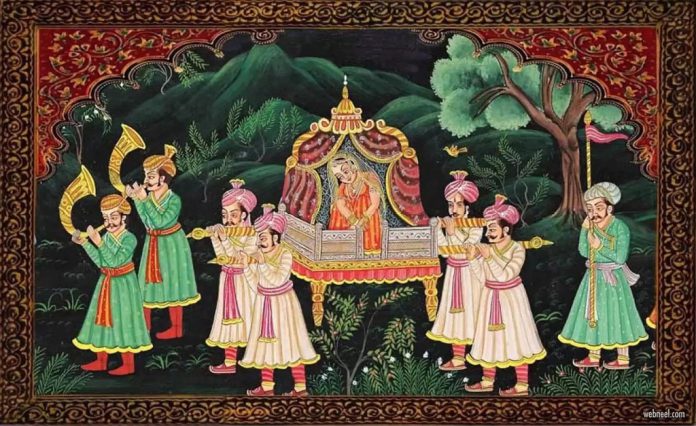THE HISTORY OF THE RATHORES
Rathore is a Rajput clan found in the Northern regions of India.
Origin of the Rathores
The Rathores’ origins remain disputed. A section of historians argues for a Rashtrakuta origin, claiming that branches of Rashtrakutas had migrated to Western Rajasthan as early as the late tenth century; and that multiple inscriptions of “Rathauras” have been located in and around Marwar dating from the tenth to thirteenth century; as a result the Rathores may have emerged from one of the Rashtrakuta branches.
While Muhnot Nainsi, employed by the Rathores of Marwar, chronicled a bardic genealogical history of the Rajputs in western Rajasthan. Wherein Nainsi had noted the Rathores to have originated from Kannauj before migrating to Marwar.
History of the Rathores
The first Rathore chieftain was Siho Setramot. Interestingly, he was the grandson of the last Gahadavala king Jayachandra. Then known as Raja Singhsen, Setramot abdicated the throne of Kanauj to become an ascetic but got embroiled in a royal rivalry and eventually married the daughter of a Gujarati ruler, who birthed him three sons. Asthan, the eldest, was raised at Paltan after Siho’s death (at Kanauj) and he went on to establish the first Rathore polity in Pali (and a few adjoining villages), after winning over the local Brahmins by defeating an oppressive king named Kanha Mer. But there also exist other contemporary sources that claim a slightly different origin. It is believed under Asthan’s regime, and that of his successor-rulers, the Rathore territories significantly expanded through diplomatic negotiations with other pastoral groups; the primary base shifted multiple times. Marital alliances with any warrior group operating out of Thar were especially favoured and they were welcome to be inducted into the Rathore fold.
During the fourteenth and fifteenth centuries, multiple matrimonial and military alliances were entered into with local Islamic kingdoms; including the Delhi Sultanate.
Relations with the Mughals remained largely cordial for the length of their reign, though it was punctured with periods of disagreements.
The situation deteriorated once Akbar was ordained as the Mughal Emperor, and Rao Maldeo died. His son Rao Chandrasen Rathore defended his kingdom for nearly two decades against relentless attacks from the Mughal Empire. The Jodhawat Rathores lost much of their territory rapidly and were effectively subsumed. The Bikawat Rathore entered into friendly relations with the Mughals, led their armies, and were extensively patronaged to the extent of being allowed to control the Jodhpur Fort. In 1583, Uday Singh finally accepted Mughal suzerainty and in return, was granted part of a Pargana in Jodhpur; this would enable the Jodhawat Rathores to become all-weather allies of the Mughals though punctuated with discords.
The Rathore ruler of Jodhpur Man Singh initially refused to form treaties with the British. However, in 1805-1806 he approached the British for military advice and paid the British to protect his state against the predatory actions of the Marathas and Pindaris. By 1816 the British changed this treaty and expelled all foreign influence in Jodhpur, they also started arbitrating in state matters. By 1818 the alliance was cemented and in 1832 the Rajputana agency was formed. The Rathore Raja Man Singh was not always cordial with the British during this time, in 1829 Man Singh gave shelter to Mudhoji II Bhonsle and antagonized the British. Mudhoji was fiercely protected by Man Singh and lived his remaining life in Jodhpur till his death in 1840. The 1857 rebellion sparked uprisings amongst several Rajput chieftains of the Rathore clan in Jodhpur State. Prominent amongst them was Kushal Singh of Auwa. After several failed attempts by the British, the rebellion was quelled by the British army under the command of Brigadier Holmes.
During the 20th century, the lower castes in India tried to uplift their social standing by adopting the surnames of other castes. The Rajput clan ‘Rathore’ was adopted as a surname by the Teli community in 1931, who started calling themselves Rathore Vaishyas for caste upliftment.
THE HISTORY OF BAIS
The Bais are a Hindu Rajput clan from India.
Their wealth caused Donald Butter, a visiting doctor who wrote Outlines of the Topography and Statistics of the Southern Districts of Oudh, and of the Cantonment of Sultanpur-Oudh, to describe the Bais Rajput in the 1830s as the “best dressed and housed people of the southern Oudh”. The Bais Rajputs were popularly known for their well-building prowess.





